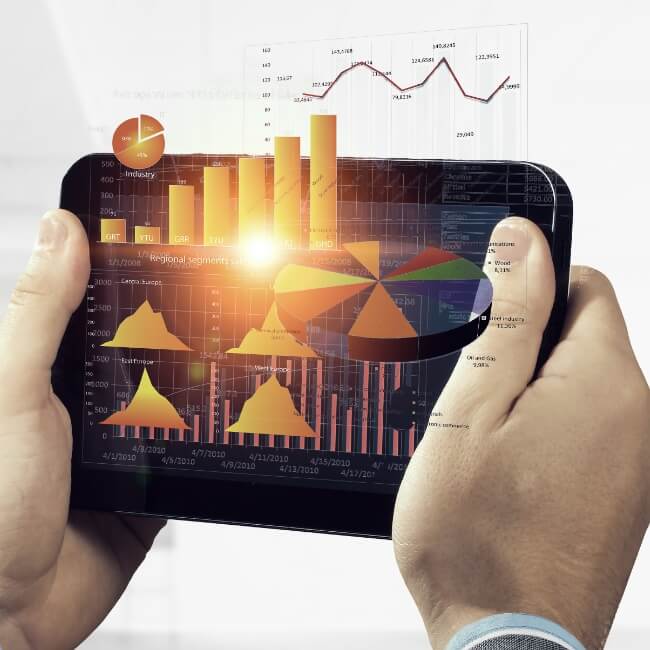Performance summary
Energy management
1
2
3
Monitoring and control of water treatment
The results of the waste water quality measurement in 2022-2024
| No. | Measurement Index | Unit | Analysis result 2024 | Analysis result 2023 | Analysis result 2022 | Standard | Compare Benchmarks |
|---|---|---|---|---|---|---|---|
| Area Effluent | Area Effluent | Area Effluent | |||||
| 1 | pH at 25 oC | - | 7.9 | 7.7 | 6.5 | pass | 5.5 - 9.0 |
| 2 | Biochemical Oxygen Demand | mg/L | 2.0 | 4.42 | 2.2 | pass | <20 |
| 3 | Chemical Oxygen Demand | mg/L | <40(23.0) | <40(17.0) | 32 | pass | <120 |
| 4 | Total Suspended Solids | mg/L | <10 | <10 | <10 | pass | <20 |
| 5 | Total Dissolved Solids | mg/L | 176 | 212 | 224 | pass | <3,000 |
| 6 | Oil & Grease | mg/L | <1.0 | <1.0 | <1.0 | pass | <5 |
Drain water control guidelines
The company has guidelines for practices and control of the internal water usage. This includes discarding water after processing to reduce wastewater problems and creates a good environment within the company and surrounding communities.
Waste water from human consumption
The water that comes from this source is to cleanse the body, hands and the toilets. Such water will be discharged into the sewer, connected to the wastewater treatment pond in front of the company. In which, will amend the water condition to meet the quality requirements before releasing it outside. To encourage campaigns to control the use of water as well as to control and decrease the amount of wastewater.
Waste water from product’s cleansing
The water that comes from this source is water from cleaning a workpiece (after firing it with nitrogen gas) and washing the workpiece after curing it. As well as, the use of water in the process of boiling the workpiece and in the washing process of nitrogen-fired workpieces. The water that comes from these sources will be discharged into the sewer, connected to the wastewater treatment pond in front of the company
Waste water from production area’s cleansing
These waters are from after cleaning the factory floors, washing clothes and mopping the floor. The water from these sources will be dumped into the prepared sand vats. Allowing the sands to absorb the water which will eventually evaporate. After that, the sands will be replaced, once it gets very dirty. Contaminated sand will be disposed of by companies that accept hazardous wastes.
Oil and paint leftover from painting the factory floor
The leftover chemicals are disposed of by pouring into sand buckets. The contaminated sand will be changed periodically and sent out to the outsourced waste management team.
Wastewater from canteen
Dishwashing water from cleaning utensils are passed through grease traps before being sent to the wastewater facility. Water from cleaning vegetables, left over food, hand washing wastewater, are disposed of directly to the wastewater facility and being treated before leaving the factory.
Water from emergency situation training
Emergency response training to chemicals/oil leaking and fire are contaminated water. The water will be collected and treated through our wastewater facility before being disposed of.
Cooling tower
Water in the cooling towers are being monitored for pH and hardness, and replaced on a regular basis. Water from cooling towers will be used to water plants in the garden.
Industrial waste management
The company uses only high quality machines in order to reduce waste. The company also hires certified waste management companies according to Thai laws.
Waste management
The company has delivered the wastes in the production process to the experts with the disposal license for transportation and disposal. The company's environmental treatment system complies with the regulations of the Ministry of Industrial Engineering. In addition, waste treatment inside the company also considers the impact on the environment and safety. The company also organizes internal activities to continuously reduce the amount of waste every year.
| Unit | 2024 | 2023 | 2022 | 2021 | |
|---|---|---|---|---|---|
| Amount of waste | Kgs. | 458,928 | 331,254 | 346,701 | 351,100 |
| General garbage | (%) | 27 | 36 | 48 | 52 |
| Industrial waste | (%) | 52 | 34 | 29 | 31 |
| Recycling waste | (%) | 18 | 26 | 20 | 15 |
| Hazardous waste | (%) | 3 | 4 | 4 | 2 |
Types of waste
Greenhouse gas management
Polynet acknowledges the impact of global warming and Greenhouse Gass (GHG) emission, which are mainly associated with Carbon dioxide (CO2) gas and contribute to the climate change, rising temperature of the earth surface, and many occurring natural disasters. This impacts the daily lives and well-being of people nowadays. Aware of the potential problems and impacts of these changes, the company set policies related to GHG emission and Carbon Footprint. To manage and limit GHG emission, we set a standards in compliance to the ISO 14064-1:2018 and develop a strategy to adopt renewable energy and other effective methods.
Target
The company aims to reduce greenhouse gas emissions from its operations (Scope 1 and Scope 2) by 10% from the 2021 baseline within 5 years. By the end of the 5th year (2026), the intensity value should be reduced to less than or equal to 1.741 tons of CO2e per 1 ton of production. In 2024, the intensity value was 0.193, which is less than 1.741. Therefore, the target for this year has been achieved. This reduction was achieved by switching from purchased electricity to solar energy, resulting in significant emissions reductions.

| Base year 2021 (electricity bill cut-off) |
2022 | 2023 | 2024 | |
|---|---|---|---|---|
| scope 1+2 (Emission quantity) ton CO2e | 4,971.67 | 6.174.92 | 5.256.47 | 4,884.91 |
| Production rate (Ton) | 2,570.46 | 3,131.58 | 3,027.53 | 5,975.00 |
| Amount of Co2e released per 1 ton of production rate. | 1.934 | 1.972 | 1.736 | 0.818 |
| Emissions released per unit of production 1 Ton | 0.038 | More | 0 | 0 |
| Target reduction of 10% (next 5 years) | 0.193 | 0.193 | 0.193 | 0.193 |
| Year 5, the intensity value must be the amount of ton CO2e released per 1 ton of production rate, which is less than equal to 1.741 (1.934-0.193) |
- | Didn't get the target | On target | On target |

Greenhouse Gas Emissions Reduction Program
In the year 2024, the company conducted activities to reduce greenhouse gas emissions by upgrading the use of solar energy (Solar cells) to replace purchased electricity, totaling 3,211,071.00 Kwh. This resulted in a reduction of approximately 1,605,214.39 KgCO2e in greenhouse gas emissions.
The company has appointed BSI Group (Thailand) Limited ("BSI") as the carbon footprint assessment verifier registered with the Greenhouse Gas Management Organization (Public Organization) or GHG Management Organization. BSI is responsible for auditing the greenhouse gas emission reports for the year 2021 of the company. According to LRQA's assessment report, there were no indications to suspect that the company's greenhouse gas emission report contained significant inaccuracies. This report was issued on February 13, 2025.
Greenhouse gas emission by Polynet in 2024
| 1 January - 31 December 2022 | 1 January - 31 December 2023 | 1 January - 31 December 2024 | |
|---|---|---|---|
| Greenhouse gas emission volume for area 1 (Ton CO2e) | 441 | 321 | 486 |
| Greenhouse gas emission volume for area 2 (Ton CO2e) | 5,723 | 4,935 | 4,399 |
| Greenhouse gas emission volume for area 3 (Ton CO2e) | 4,445 | 3,031 | 3,162 |
Note: according to the accounting standard regarding greenhouse gas emission (GHG Protocol) for the public and private sectors, which is developed by the World Resource Institute (WRI) in conjunction with the World Business Council for Sustainable Development (WBCSD), direct and indirect emission of greenhouse gases can be categorized into 3 scopes.Scope 1: all direct GHG emission Scope 2: indirect GHG emission from purchasing electricity, heat, or steam Scope 3: indirect GHG emission outside of the scope 2 (e.g., GHG emission from activities related to the transportation with vehicles not controlled or owned by the reporter, etc.)
Initiatives to reduce greenhouse gas emission
The company has enhance the overall efficiency of the machines by utilizing efficient and up-to-date machines. This helps reduce fuel consumption and carbon dioxide emission.






